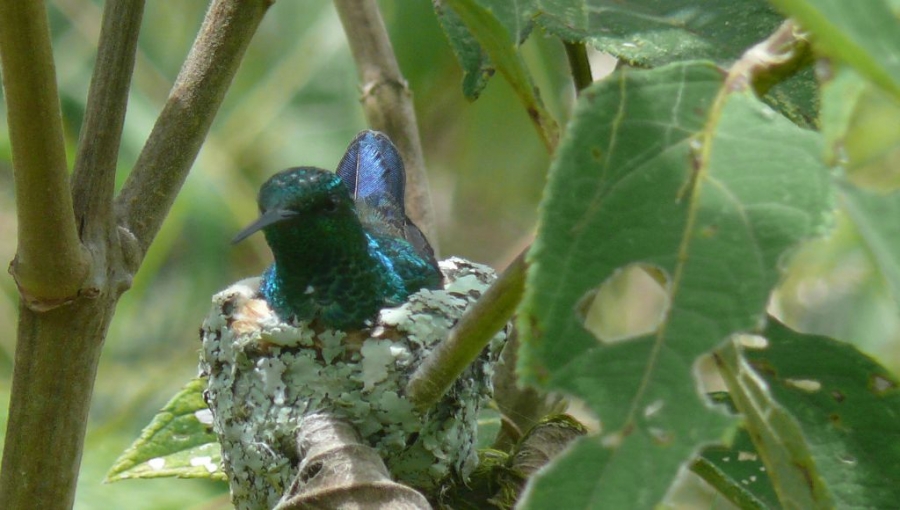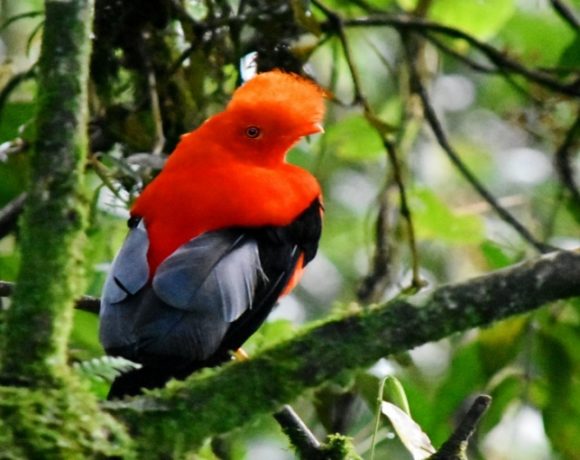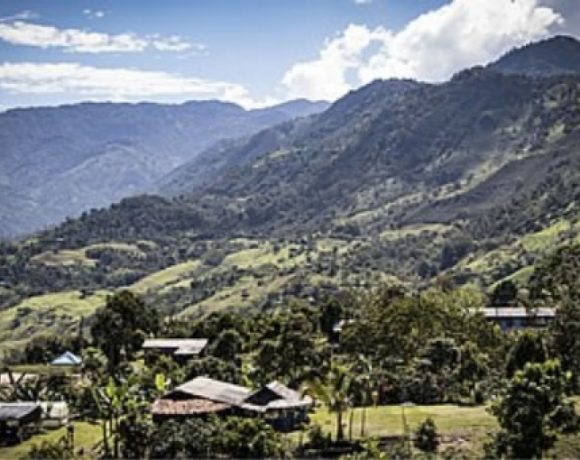Antioquia’s Private Nature Reserves Growing: Colombians, Expats Teaming-up

Among the encouraging signs of Colombia’s and Antioquia’s recuperating economy, environment and security situation is a growing network of private nature reserves – overwhelmingly founded by native Colombians, but now including a few “rare-bird” expats.
One such rare-bird migrant is North American-born biologist and construction contractor Doug Knapp, who two years ago launched the “La Esperanza” birding lodge and private reserve just outside Jardin, Antioquia.
Overlooking Jardin and within sight of the spectacular Farallones de Citara mountan range is Knapp’s six-hectare reserve (at 2,000 meters above sea level), where he and Colombian colleagues have built rather luxurious guest cabins and laid-out trails inside a regenerating forest.Leer más
Among the encouraging signs of Colombia’s and Antioquia’s recuperating economy, environment and security situation is a growing network of private nature reserves – overwhelmingly founded by native Colombians, but now including a few “rare-bird” expats.
One such rare-bird migrant is North American-born biologist and construction contractor Doug Knapp, who two years ago launched the “La Esperanza” birding lodge and private reserve just outside Jardin, Antioquia.
Overlooking Jardin and within sight of the spectacular Farallones de Citara mountan range is Knapp’s six-hectare reserve (at 2,000 meters above sea level), where he and Colombian colleagues have built rather luxurious guest cabins and laid-out trails inside a regenerating forest.
The reserve http://www.laesperanza.co/ — which can host up-to 15 guests at-a-time — is reached via a roughly four-hour drive from Medellin, along good highways.
However, first-time visitors to the lodge itself – on an unpaved, but easily drivable road – would require a bit of cell-phone coaching on directions, because of a lack of clear signage. (If required, the utterly lost can follow Doug’s four-wheel-drive vehicle up the mountain).
Thanks to recent expansions, La Esperanza now has eight rooms available, six of which have double beds. The typical size of visiting groups is two to six people, Knapp said.
A relatively rare (and usually hard-to-see) Chestnut Wood Quail is a special attraction for birders at La Esperanza, Knapp told Medellin Herald.
Birders coming to Jardin also tend to visit the nearby breeding grounds for the rare Yellow-Eared Parrot – occasionally seen flying around or feeding near La Esperanza — and also for an exceptionally easy-to-see lek of the spectacular Andean Cock-of-the-Rock, just four blocks from Jardin’s main town square (“el parque”).
Overnight lodgers at La Esperanza site pay rates (recently quoted at around US$110 per-person) that would seem reasonable to relatively prosperous U.S. and European birders — along with some relatively well-off Colombians.
But La Esperanza also opens its doors to those with thinner wallets, such as day-trip birders — mainly Colombians, but also some foreigners — that pay a modest daily entrance fee (just COP10,000, or about US$3.50 at exchange rates as of this writing). Nature-oriented tent camping also can be arranged at a special site on the reserve.
In addition, special discount rates for lodging in the relatively posh cabins – with the possibility of enjoying one of Doug’s tasty, home-cooked meals — also can be negotiated for certain Colombian environmental non-profit groups, Knapp told Medellin Herald.
The list of nearly 200 bird species recorded at La Esperanza (to date) is likely to grow, as Knapp aims to expand the reserve in coming years.
In the meantime, one crucial project Knapp is spearheading aims to create forest “corridors” between La Esperanza and neighboring tracts. Such corridors would enable greater, safer movement of birds and other animals from one forest tract to another, while also avoiding potential threats from neighboring dogs or cats.
Among recent arrivals at the reserve: A type of nocturnal monkey, Aotus Lemurinus, as well a species of “olinguito” (a tree dweller that looks like a smaller version of a kinkajou, but without a prehensile tail), and (most recently) a two-toed sloth, Knapp said.
While La Esperanza originally was organized as a for-profit business, it’s now converting to an official non-profit foundation, carrying the name of “Fundacion Reserva La Esperanza,” Knapp explained. The reserve also will soon become part of Colombia’s “Resnatur” network www.resnatur.org.co of private ecological reserves, he added.
La Esperanza’s advisory council includes several prominent ornithologists and biologists. A new project in the works is a photographic guide to birds that can be found in and around the reserve, he said.
















